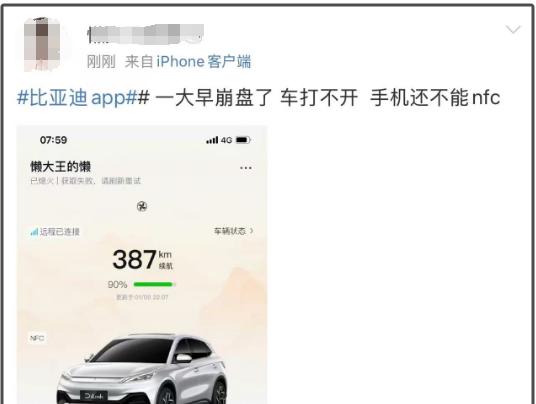BYD App Outage Disrupts Morning Commute Across China
On January 9th, BYD’s app experienced a nationwide outage during morning rush hour, preventing many owners from unlocking their vehicles through the mobile app, highlighting concerns about over-reliance on connected car technology.

The recent BYD app outage in China has sparked intense discussion about the growing dependence on connected car technologies and the importance of backup access methods. The incident, which occurred during the morning rush hour on January 9th, left numerous BYD owners unable to access their vehicles through the smartphone app, significantly disrupting their morning commute plans.
The incident reveals several critical aspects of modern automotive technology integration. First, while BYD’s connected features offer convenience through remote vehicle access and climate control, the outage exposed potential vulnerabilities in relying solely on digital access methods. Several owners reported being unable to enter their vehicles despite having their cars physically nearby, as they had grown accustomed to using only the smartphone app for access.
Technical analysis shows that while the app experienced connectivity issues, alternative access methods like NFC and physical keys remained functional. This highlights the importance of BYD’s multi-layered access system design. However, many users had become so accustomed to the convenience of app-based access that they hadn’t maintained backup entry habits.
The situation has prompted valuable discussions about redundancy in vehicle access systems. Modern BYD vehicles typically come equipped with multiple entry methods:
- Physical key fob
- NFC-based smartphone access
- Bluetooth connectivity
- Mobile app-based digital key
Industry experts emphasize that connected vehicle features should enhance rather than replace traditional access methods. The incident serves as a reminder that automotive manufacturers must balance innovation with reliability, ensuring robust backup systems are in place.
BYD’s server infrastructure and disaster recovery protocols have also come under scrutiny. As one of China’s leading electric vehicle manufacturers, the company’s growing user base requires increasingly robust backend systems to maintain consistent service. This incident demonstrates the need for enhanced server redundancy and failover capabilities.
Looking forward, this event offers important lessons for the automotive industry’s digital transformation. While connected features provide unprecedented convenience, manufacturers must ensure core vehicle functions remain accessible even during network outages. This may involve strengthening backup systems, improving server infrastructure, and better educating users about maintaining multiple access methods.
For consumers, the incident underscores the importance of familiarizing themselves with all available vehicle access methods rather than relying exclusively on a single approach. Whether through NFC, physical keys, or other backup options, maintaining awareness of alternative access methods can help prevent similar disruptions in the future.